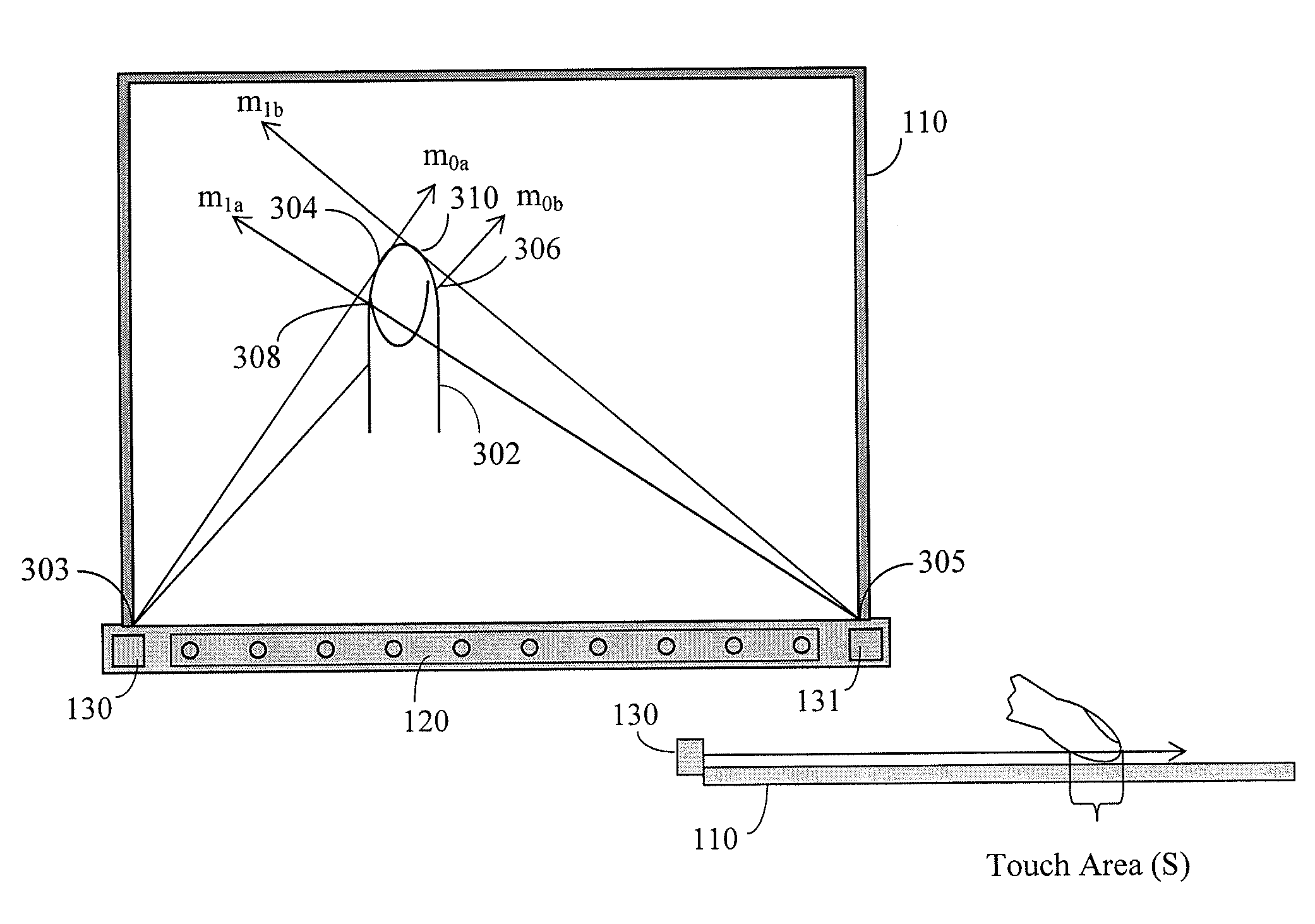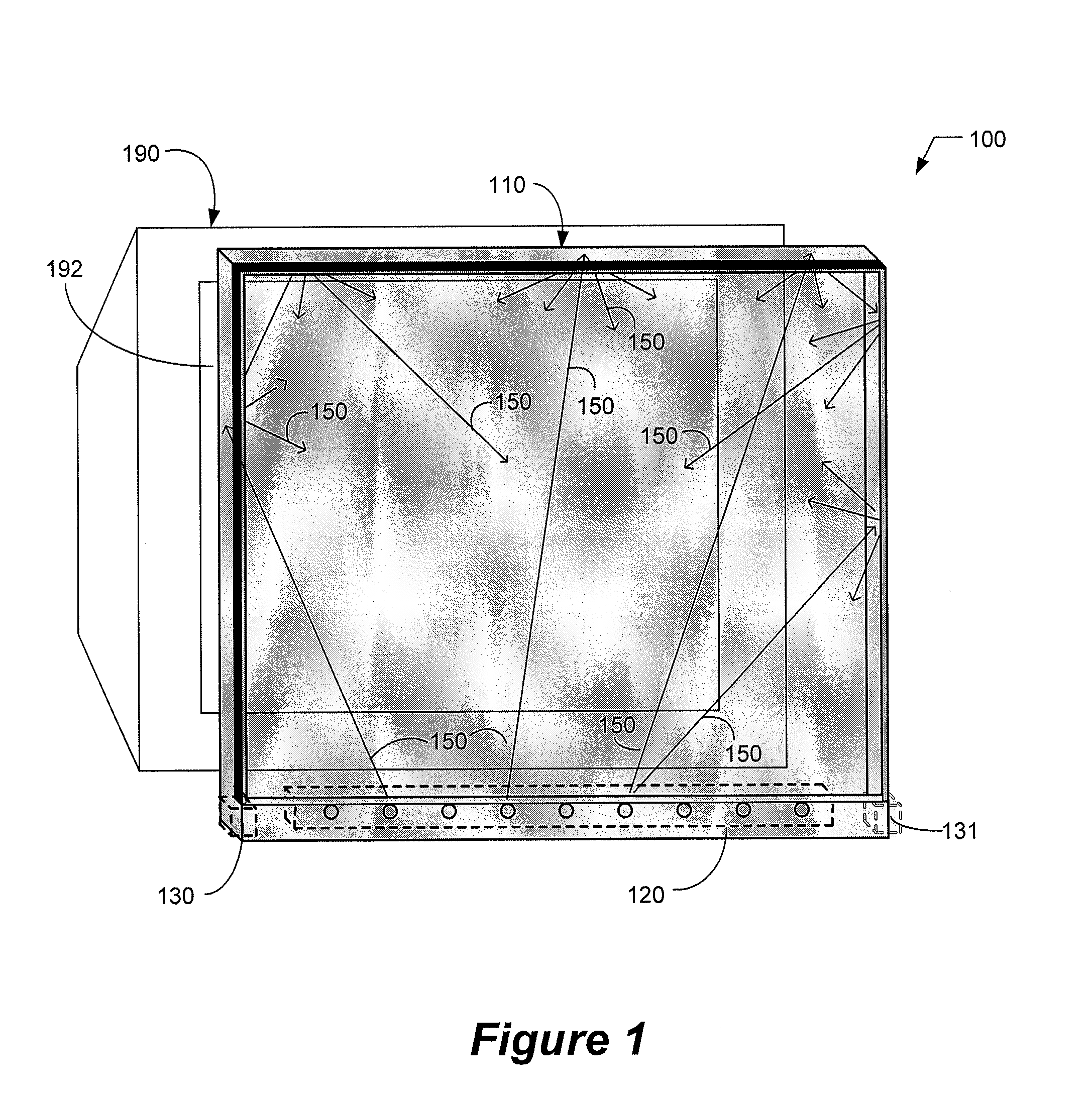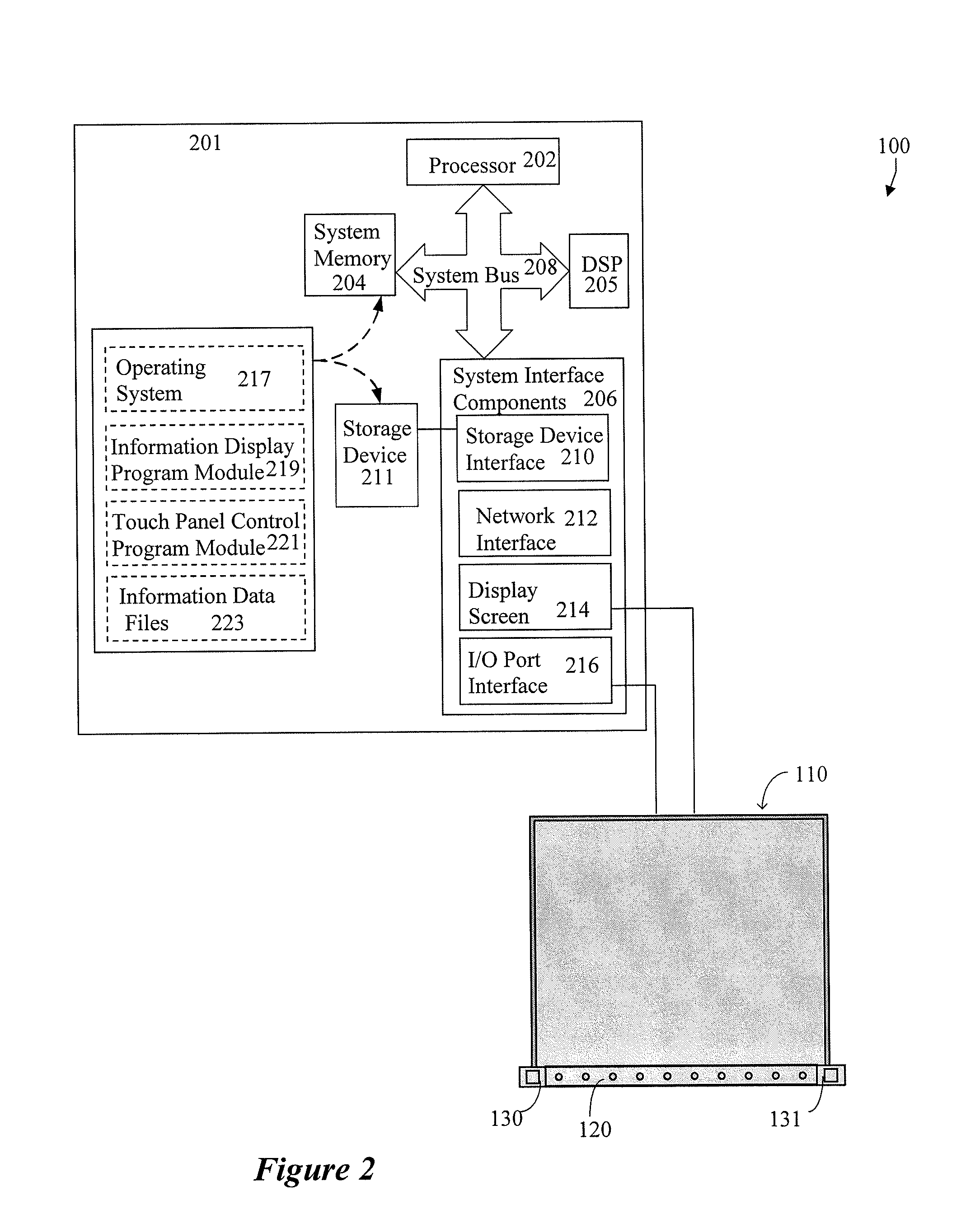Touch Screen System with Hover and Click Input Methods
a touch screen and input method technology, applied in the field of touch screen sensitive screens, can solve the problems of inability to provide separate tracking or dragging operations, difficulty in precise touch screen interactions, and lack of sensing precision, and achieve the effect of small touch area and larger touch area
- Summary
- Abstract
- Description
- Claims
- Application Information
AI Technical Summary
Benefits of technology
Problems solved by technology
Method used
Image
Examples
Embodiment Construction
[0023]The present invention provides touch screen systems and methods for approximating at least four interaction states: (1) out-of-range; (2) tracking; (3) selection; and (4) dragging. The systems and methods of the present invention provide functionality for discerning between the various interaction states regardless of the orientation of the user's finger, stylus or other touch object and without reliance on direct sensing of touch pressure or area. Exemplary embodiments of the present invention will hereinafter be described with reference to the drawings, in which like reference numerals represent like elements throughout the several figures.
[0024]FIG. 1 is an illustration of an exemplary touch screen system 100. As used herein, the term “touch screen system” is meant to refer to a touch screen 110 and the hardware and / or software components that provide touch detection functionality. The exemplary touch screen system 100 is shown adjacent to a display device (i.e., video moni...
PUM
 Login to View More
Login to View More Abstract
Description
Claims
Application Information
 Login to View More
Login to View More - R&D
- Intellectual Property
- Life Sciences
- Materials
- Tech Scout
- Unparalleled Data Quality
- Higher Quality Content
- 60% Fewer Hallucinations
Browse by: Latest US Patents, China's latest patents, Technical Efficacy Thesaurus, Application Domain, Technology Topic, Popular Technical Reports.
© 2025 PatSnap. All rights reserved.Legal|Privacy policy|Modern Slavery Act Transparency Statement|Sitemap|About US| Contact US: help@patsnap.com



